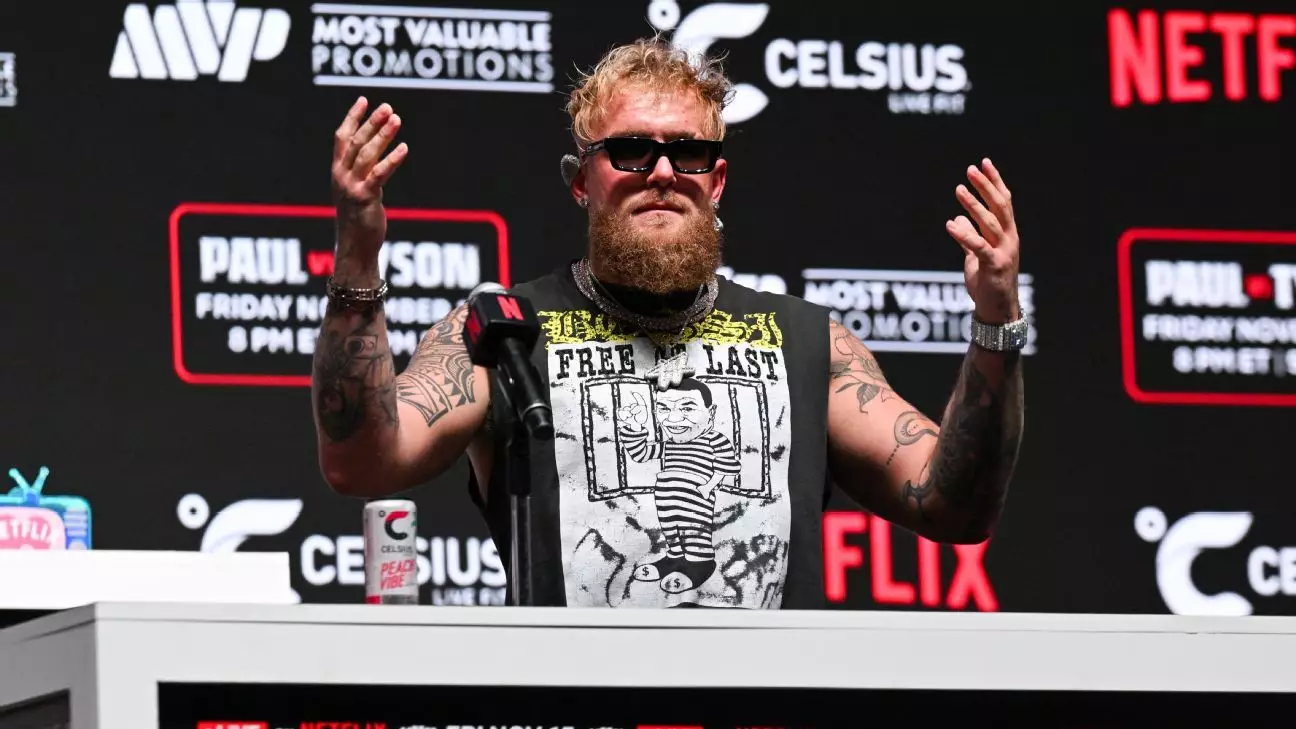In the world of boxing, few matchups generate as much intrigue and spectacle as a fight between Jake Paul and Mike Tyson. These two figures, vastly different yet bound by the same sport, highlight the evolution of boxing from an athletic art form to a complex amalgamation of entertainment, celebrity, and traditional sportsmanship. As Paul prepares to enter the ring, the narrative surrounding the fight extends far beyond merely two fighters squaring off; it encapsulates the very fabric of modern boxing and the contrasting personas that inhabit it.
Jake Paul, at 27 years old, might represent the cutting edge of contemporary boxing, a flashy and polarizing influencer whose journey from YouTube celebrity to professional boxer fascinates and frustrates traditionalists. With a record of 10-1, including seven knockouts, Paul has undeniably made his mark in the sport. Yet, many argue that his rise has come at the expense of the deeper values that boxing has historically upheld, such as respect, legacy, and the merit of facing elite competition. His willingness to engage with opponents from various disciplines—including other social media stars and unorthodox choices like MMA fighters—has led to claims that he dilutes the integrity of boxing, raising questions about what it means to be a professional boxer today.
In stark contrast, Mike Tyson’s entrance into the boxing arena evokes a sense of nostalgia and admiration. At 58, with nearly two decades of absence from professional competition, Tyson remains one of the most iconic figures in the sport’s history. His comeback attempts and presence continue to evoke both respect and curiosity. Tyson symbolizes the golden era of boxing—an era where fighters were not just athletes but legends whose personal stories intertwined with their athletic prowess. The love and loyalty that Tyson commands from boxing fans are palpable, making it evident that he enters the ring not merely as a fighter but as a historical figure whose shadow looms large over the sport.
However, the fight presents a compelling question: can Tyson, despite the accumulated years and the long absence, stand toe-to-toe with the younger, more agile Paul? Critics argue that facing a fighter who hasn’t competed professionally in over 20 years is a questionable choice for Paul, further suggesting his willingness to capitalize on Tyson’s fame without necessarily engaging with the sport at a deeply competitive level.
Amidst the chaos of opinions, one aspect of Jake Paul’s personality has emerged as central to his marketing and public persona: his deliberate adoption of the villain role. At a recent press conference, Paul acknowledged the polarizing nature of his character, claiming that he no longer seeks validation through public perceptions. “I’ve embraced the hate,” Paul declared, indicating a conscious decision to transform criticism into a fundamental aspect of his brand. Importantly, this villainous persona has proven advantageous; it turns conflict into currency, drawing attention from fans and detractors alike.
Paul’s willingness to provoke is a calculated strategy—a recognition that showmanship complements athleticism in the modern fight scene. As evidenced during the press conference, where many fighters on the undercard openly sided against him, the storylines crafted by competitors play an integral role in building a fight’s allure. “Ultimate hero versus ultimate heel” is how Paul describes his fight against Tyson, framing it as a battle between generations and ideologies.
In the lead-up to the fight, Paul asserted that he doesn’t fear Tyson’s reputation or past. “I want him to be that old savage, Mike,” Paul suggested, signaling his readiness to face a combative opponent. This challenge brings additional layers to the bout; it becomes a test of not just physical skill but also psychological prowess.
The storyline has captured the imagination of audiences, igniting fervent debate about what fans should value in boxing: the spectacle, the nostalgia, or the sport itself? With stakes high for both fighters, this match is set against a backdrop of evolving perceptions of boxing—a sport straddling the line between genuine competition and entertainment spectacle.
As the date approaches for this much-anticipated showdown, the outcome will reverberate beyond the ring. It embodies the complexities of modern sport, the dichotomy of tradition versus adaptation, and perhaps most crucially, the power of narrative in influencing public perception. Whether you root for Jake or Mike, it’s undoubtedly a moment that will enter the annals of boxing history, representing the ongoing dialogue between the past and the future of the sport.

Leave a Reply